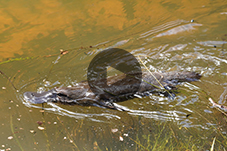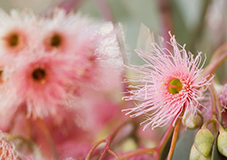Resilient Rivers for Resilient Hawkesbury Platypus Populations Project
We are thrilled to announce that we’ve secured $1 million from the Urban Rivers and Catchment Program (opens in a new window) to protect the local platypus populations in the Hawkesbury-Nepean River! This funding, managed by Western Sydney University, will enable us to implement impactful on-ground actions that enhance ecological resilience, embrace the principles of Caring for Ngurra (Country) and empower our community to establish a connected network of 'Platypus Parks'.
Project Overview
The ‘Resilient Rivers for Resilient Hawkesbury Platypus Populations’ project (or RRRP) aims to establish a network of ‘Platypus Parks’ along a stretch of the iconic river and its tributaries, protecting and providing habitat for this iconic native species. By working with First Nations peoples, private landholders, local stakeholders, and active community groups the majority of funding will be dedicated to on-ground initiatives to enhance habitat connectivity, riparian health and platypus populations.
Opportunities for community involvement
Over the next 3 years, we will be offered a wide range of exciting initiatives for you to get involved with! This includes:
- Direct on-ground riparian restoration works with private landholders in Cattai and Kurrajong.
- Direct on-ground riparian restoration works within public reserves with known platypus populations in partnership with First Nations groups, National Parks and Wildlife Services, and local community Landcare and bushcare groups.
- Educational events, community planting days, and professional development training for community and industry, such as our Hawkesbury-Nepean Regional Forum held annually.
- Annual platypus monitoring undertaken by our dedicated research team each Spring.
- Field work, volunteering and internships to support key activities for Western Sydney University students.
About our local platypus
The Hawkesbury-Nepean River provides a complex ecosystem for a multitude of plant, animal and invertebrate species including the iconic Australian platypus (Ornithorhynchus anatinus), supporting agriculture and aquaculture industries as well as tourism and recreation sectors. Current scientific research by Dr Michelle Ryan, Western's School of Science (and our Waterkeeper) along with her student research team, indicates the widespread presence of urban platypus populations in the Hawkesbury-Nepean Catchment in low densities. However, they are under threat. The platypus is recognised as a near threatened species in Australia, with current populations decreasing due to the combined effects of climate change, invasive vegetation, introduced predators, improper fishing practices, and habitat fragmentation. For Greater Western Sydney specifically, this significant challenge is made worse with an alarming rate of urban development and human population growth heavily degrading local waterways.
Project Activities
Cattai Students dive into Platypus conservation
On Thursday, 24 July, the Resilient Rivers for Resilient Hawkesbury Platypus Populations Project brought together 57 students from Cattai Public School for a hands-on day of environmental education and action. The event, led by Hawkesbury Environment Network, Hawkesbury-Nepean Landcare Network, in partnership with several leading organisations, inspired youth-led conservation and restoration of local platypus habitats. Students planted native, flood-tolerant species to support bank stability, improve water quality, and nurture better living conditions for local platypus right behind their school at Cattai Bridge Reserve.
Aligning with National Tree Day, the event deepened the students' understanding of how culture and environment are intertwined with Dharug cultural workshops and a language session led by students from Londonderry Public School. Dr Michelle Ryan, Hawkesbury-Nepean Waterkeeper and Western Sydney University lecturer introduced students to platypus ecology. Cattai Public School principal Robert Hawkes noted the students’ strong environmental and cultural connection, calling the day “something they will remember for the rest of their lives.”
This project is funded by the Australian Government’s Urban Rivers and Catchments Program, with the support of Western Sydney University and the Hawkesbury-Nepean Waterkeeper Alliance.
![]()
Mobile options:



